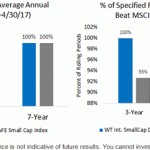This week’s Commitments of Traders Report includes quite a few notable changes. The number of long positions in the Canadian dollar have fallen by a significant degree, while speculators have also increased their short positions in the currency. The result is that speculators are now net short the Canadian dollar for the first time since July 2017. Speculators have also cut long positions in the Australian dollar. On the other hand, speculators have added to their net long positions in the Japanese yen, gold, and the British pound.
Turning to extremes in positioning, long crude oil remains at a bullish extreme based on 36-month trailing average net positions. New extremes this week include long Japanese yen positions (based on 12-month trailing averages) and long British pound positions (based on 36-month trailing averages). Short USD is no longer at a bearish extreme.
The purpose of this weekly report is to track how the consensus is positioned across various major currencies and commodities. When net long positions become crowded in either direction, we flag extended positioning as a risk. Crowded positions do not suggest an imminent reversal, but should be considered as a significant risk factor when investing in the same direction as the crowd. This is shown below:
CFTC COT speculator positions (futures & options combined) – March 27, 2018

Source: CFTC, MarketsNow
Notable extremes, significant changes in weekly positions, and large net positions as a proportion of open interest are highlighted above. Extremes in net positions are highlighted when speculator positioning is more than two standard deviations above trailing 1-year and 3-year averages. Weekly changes are highlighted when they are significant as a proportion of open interest. Finally, net positions as a proportion of outstanding interest are highlighted when they are large relative to historical averages. 1-year and 3-year z-scores are visually represented below:












Leave A Comment